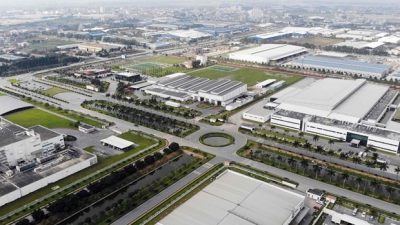
After nearly 20 years of being imported into Vietnam, initial trial results have evaluated that macadamia trees are suitable for the ecological conditions of some localities in the Northwest and Central Highlands, bringing high benefits in terms of economics, society, and the environment. Macadamia also has the potential to become a new crop for production and export.
In 2016, the Ministry of Agriculture and Rural Development (MARD) approved the planning of macadamia trees in the Northwest and the Central Highlands until 2020, with development potential to 2030.
Up to now, 23 out of 63 provinces and cities in the country have planted macadamia trees, on an area of over 16,500 hectares. Of these, nine provinces in the northwest and Central Highlands have planted over 15,400 hectares, an increase of 55% compared with the plan, while the remaining more than 1,000 hectares are scattered across 14 other provinces.
Regarding output, this year provinces plan to harvest nearly 6,600 tonnes of fresh seed, 24.5 times that of 2015. With current sale prices of dried seed at about VND200 million (US$8,600) per tonne, it is estimated that 4,000 tonnes have a value of about VND788 billion (US$34 million), of which about 60% will be exported and the rest for domestic consumption.
Vietnamese macadamia products have been exported with an output of over 2,400 tonnes of dried products per year to Japan, China, Korea, Singapore, the US, and France.
Considered the “queen of nuts”, macadamia nuts are being integrated into the country’s agricultural plans because they are regarded among the most delicious in the world and have a high value that can change farmers’ lives.
According to Minister of Agriculture and Rural Development Nguyen Xuan Cuong, macadamia trees have had a positive impact by creating jobs and improving incomes for about 10,000 rural households.
In recent years, the development of macadamia has had the advantage of being supported by Party committees at all levels and local authorities.
However, there are also many difficulties and obstacles, including complicated weather conditions and climate change. Meanwhile, farmers and businesses have no experience in developing macadamia trees; production practices are backward, and access to technology is limited. The State budget is still limited and has not yet supported sufficiently in terms of infrastructure for businesses and farmers.
In order to develop macadamia plantations in a sustainable manner, ministries, branches, and localities need to implement synchronous solutions. A development strategy for the macadamia sector should be built, with planning, varieties, markets, and investment capital all to be taken into account.
Very few crops post annual growth of 24% like macadamia nuts do, something which has contributed to poverty reduction in remote areas as well as environmental protection and national security, thus it is necessary to form a solid production chain for the nuts.
It is also important to accelerate the application of science and technology. The banking sector, along with businesses and associations should also help farmers with macadamia production, processing, and export.
Source: Nhan Dan Online


